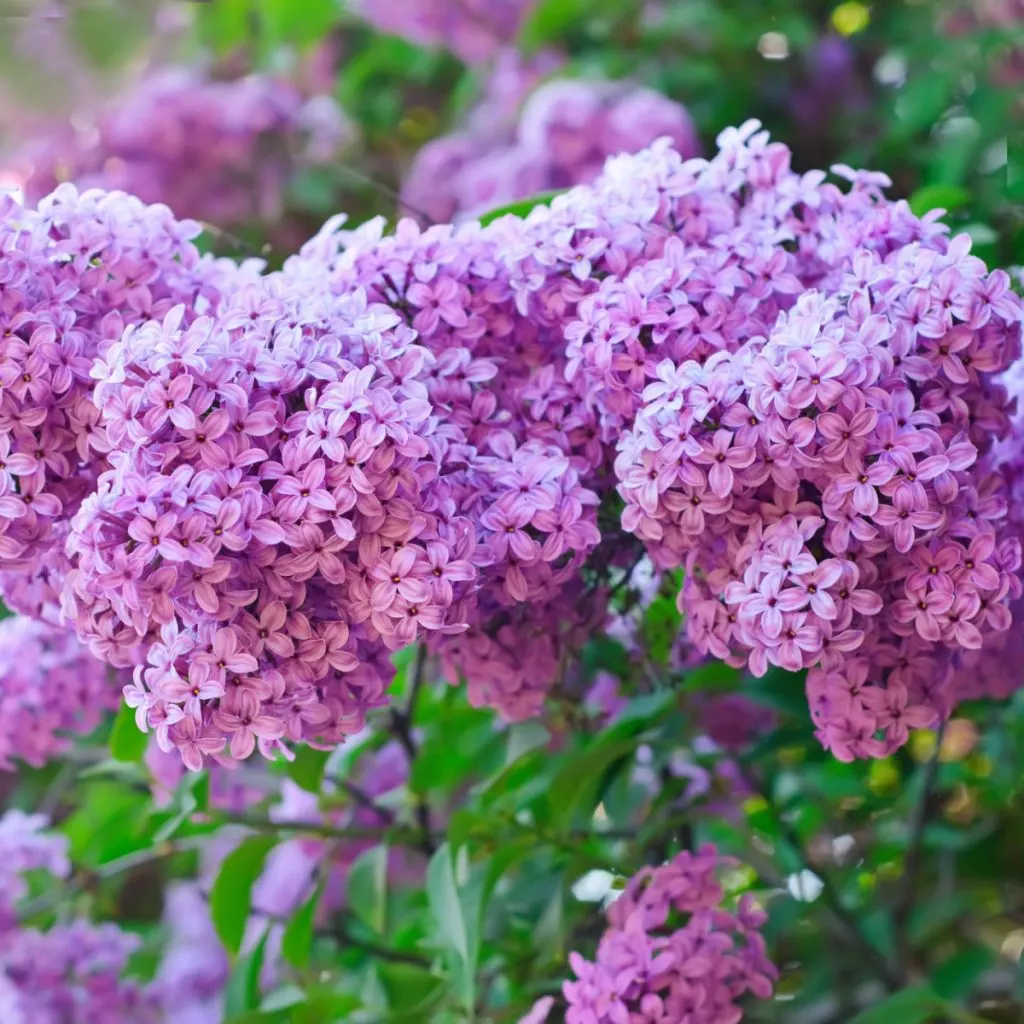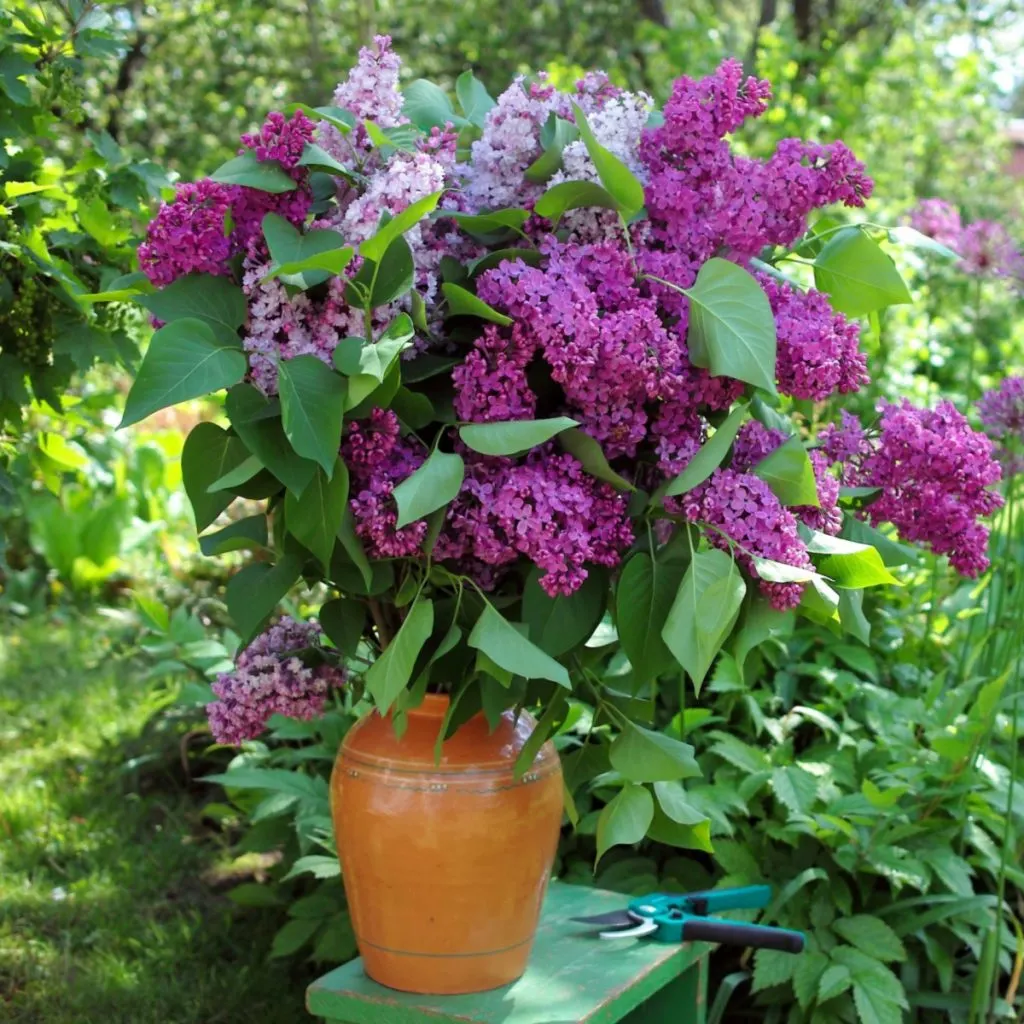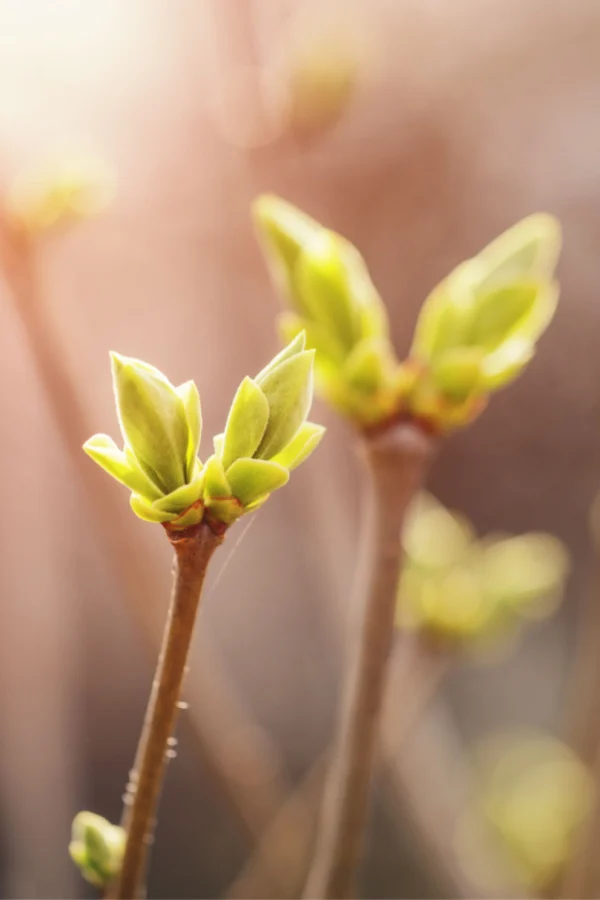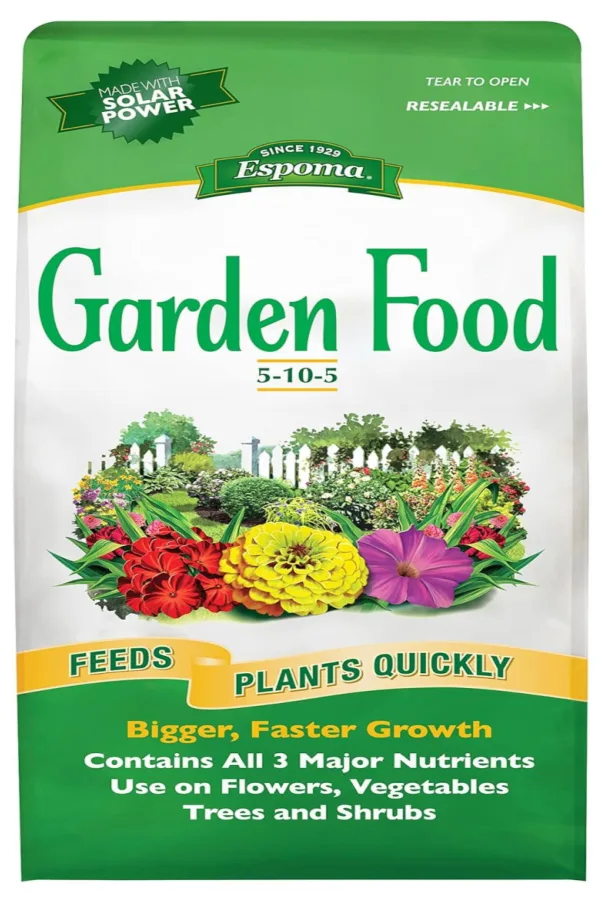When it comes to getting your lilac bushes to bloom big and beautiful year after year – how, when, and what you fertilize them with can make a huge difference between flowering success or a bush that struggles to flower at all!
With their strong, fragrant scent, the blooms of a lilac bush fill the air in mid to late spring with a distinct aroma that is nothing short of spectacular. Depending on the variety and climate where they grow, lilacs can bloom anytime from mid April to late May. And when they do, they can light up the landscape with blazing color!
With varieties that flower in brilliant hues of pink, white, blue, purple and more, there is a type and color of lilac to fit nearly any landscape. In fact, there is even a more rare lemon-color blooming variety for those who prefer a lilac in the yellow spectrum.

But no matter what size or color type of flowering lilac you might grow, having your bushes bloom with gusto is the real key to getting the most enjoyment from them each and every year. And for that, knowing the right fertilizer to give your bush – and just when to give it is absolutely vital to success!
How To Fertilize Lilac Bushes For Big Blooms – And Why To Do It Early!
A Little Goes A Long Way
For starters, it’s important to realize lilacs are not heavy feeders from the soil. In fact, if they get too many nutrients at once, it can limit flowering, or actually keep it from blooming at all. Because of this, the first rule of fertilizing lilacs is to only provide them with extra nutrients once a year.
An annual feeding gives lilac bushes more than enough energy to produce buds and flower. All without the worry of overpowering the soil with too many nutrients. Unfortunately, when a lilac is over-fertilized, it uses all of the extra nutrients to simply grow bigger. All at the expense of producing more blooms!
Giving Lilacs The Nutrients They Need – How To Fertilize Lilac Bushes For Big Blooms
Because you are only feeding lilacs once a year, it’s vital to give them the right dose of nutrients when you do power them up. Like nearly all plants, lilacs need the big 3 of nitrogen, phosphorous, and potassium to thrive. But when it comes to improving blooming potential, for lilacs, phosphorous is the most important of all three.

Nitrogen is an important nutrient for nearly all plants. It spurs strong stem and foliage growth and helps plants grow big. Likewise, potassium helps with root growth and overall health. Both nitrogen and potassium play a role in helping lilacs. But too much of either can lead to more foliage growth – but less flowers.
Phosphorous, on the other hand, is a huge nutrient for helping to form and develop bloom sets. And by selecting a fertilizer with a slightly higher phosphorous percentage than nitrogen or potassium – you can set the stage for maximum blooming. All without worrying about overpowering the bush with too much energy.
Selecting The Right Fertilizer – How To Fertilize Lilac Bushes For Big Blooms
So what is the best choice of fertilizer? For starters, select a granular fertilizer that can break down into the soil. Granular fertilizers over a short time period will soak into the roots to energize the bush. But it’s important to get the right granular fertilizer!
All too often, gardeners reach for an all-purpose fertilizer when fertilizing lilacs that are in the 15-15-15 to 20-20-20 range for nitrogen, phosphorous and potassium. Instead, it’s better to use a fertilizer with a slightly lower set of overall numbers, but with a slightly higher phosphorous number in the middle.
A good granular fertilizer in the 5-10-5, to 10-15-10 range is ideal. This will give your lilacs just enough energy without overpowering them. Even better – it gives a bit more phosphorous to help with promoting more blooms instead of just overall growth! Affiliate Link: Espoma 5-10-5 Bush & Garden Fertilizer
Now that we have covered what to feed your lilacs and why – it’s time for the when. And when it comes to getting lilac bushes to bloom – it’s all about fertilizing early in the year!
The When – How To Fertilize Lilac Bushes Early
In order to help blooming potential, it’s important to fertilize your lilacs in very late winter or very early spring. This is because the nutrients need to be in place before the plant comes out of dormancy.
Why is the timing so critical? Unfortunately, if the fertilizer is supplied too late in the spring and the bush has already begun to leaf out and grow – it will use the supply of nutrients for growing instead of storing it up for flowering.
Likewise, this is why you never want to fertilize a lilac bush in summer or fall. Once again, it will use all of the power to simply grow. All at the expense of saving any power for future blooming. The best time of all to fertilize lilac bushes is in very late winter. The second best time is in the very early days of spring – but before your bush has begun to leaf out.

It’s so important to stress getting those nutrients into your soil before the plant begins to leaf out. This all but ensures the nutrients will help with flowering – and not just a big lilac bush with lots of leaves and stems!
How To Fertilize Lilacs – A Few Final Tips
So what does exactly late winter mean? For most, if conditions allow, fertilizing in mid to late February is ideal. As long as the ground is not frozen and the fertilizer can be spread and worked into the first inch or so of the soil, it can absorb into the roots below.
As for how much to use, a few cups of granular fertilizer spread around the root zone of each bush works well. Once the fertilizer is down, use a rake to scratch it in the surface. This helps to accelerate the process of the granules releasing their nutrients into the soil and roots.
Once you have scratched the granules into the surface of the soil, top coat the fertilizer with an inch or so of compost around the base of the bush. This will help hold the fertilizer while it absorbs into the soil. Meanwhile, the compost also leaches in a low dose of nutrients as well. This too will help the plant power up before leafing out.

The good news is with compost, you don’t have to worry about overpowering your lilacs with too much power. Compost is so level and pure in its nutrient form that it will only enhance future blooming, not harm it.
Here is to fertilizing your lilac bushes early this year. And even more, to getting bigger and better blooms than ever this year! For more on fertilizing flowering bushes in the spring, check out : How To Fertilize Azaleas In Late Winter – Get Bigger Blooms Than Ever This Spring!
Simple Garden Life
Follow Our Facebook Page For Even More Great Tips! Simple Garden Life Facebook Page
Simple Garden Life is a website dedicated to keeping gardening fun, simple and enjoyable! We publish two new articles each week along with a new garden podcast episode every two weeks. This article may contain affiliate links.

